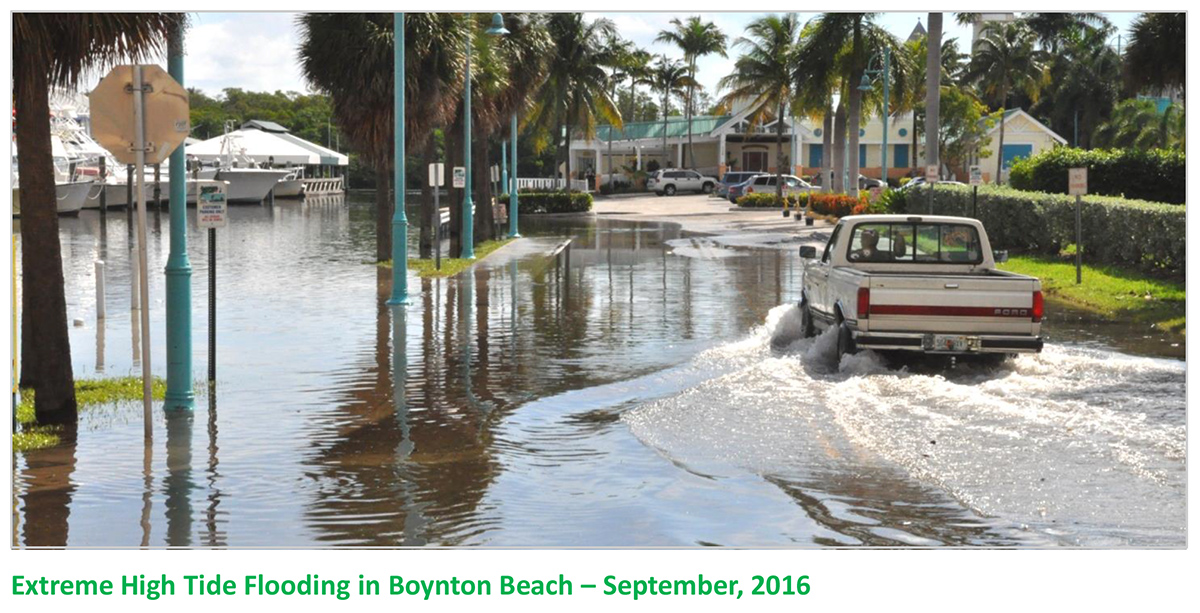Overview
Southeast Florida is widely considered one of the more vulnerable areas in the United States to the impacts of climate change. The region relies heavily on our coastlines for tourism, recreation, development, and protection from hurricanes. Palm Beach County is developing short and long-term strategies to improve the County's resilience.
Hurricanes, tropical storms, and heavy rains are a part of our everyday weather patterns here in Southeast Florida. We know when to expect them, how to track them, and how to prepare. We also know what it means to live in the heat; wearing sunscreen, drinking water, and staying indoors if it is just too hot.
More recently, as the nation continues to see record temperatures, more frequent floods and droughts, and larger tropical storms, our County also experienced weather extremes-- from severe inland flooding, annual King tides in the fall, and more severe storms. Events such as these strain our flood control system, impact our public infrastructure and the private properties, cause beach erosion, and disrupt the fragile ecosystems essential to healthy waterfront living.
We must always be prepared for those rare extreme weather events, but it is long-term climate trends and risks we need to factor into strategic decision making and planning. Scientists call our area "exceptionally vulnerable" to risks from man-made climate change. What trends should we watch? What risks should be considered?